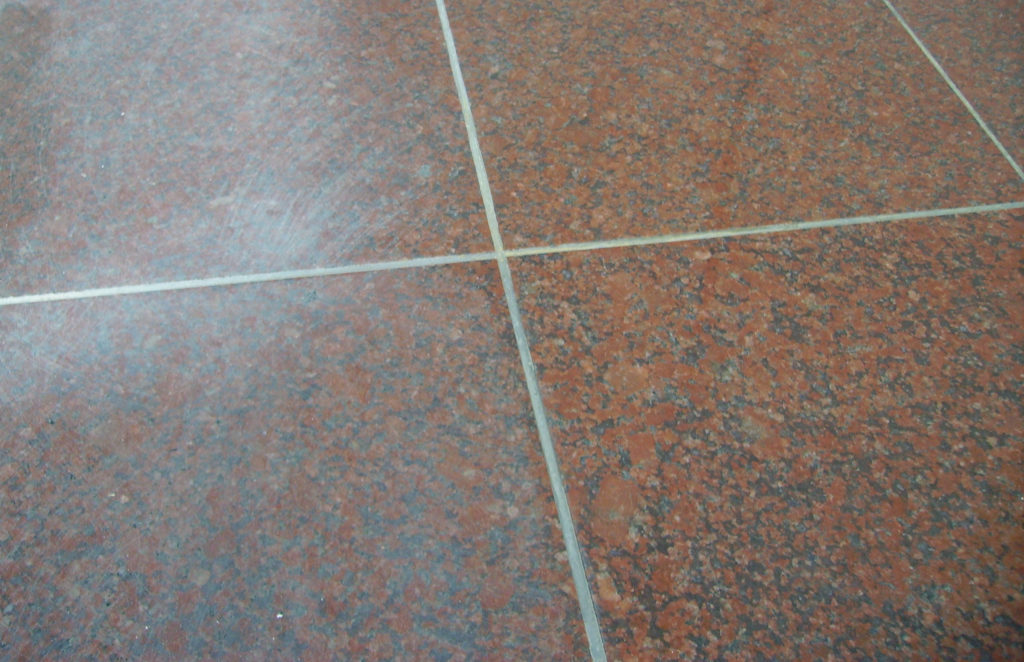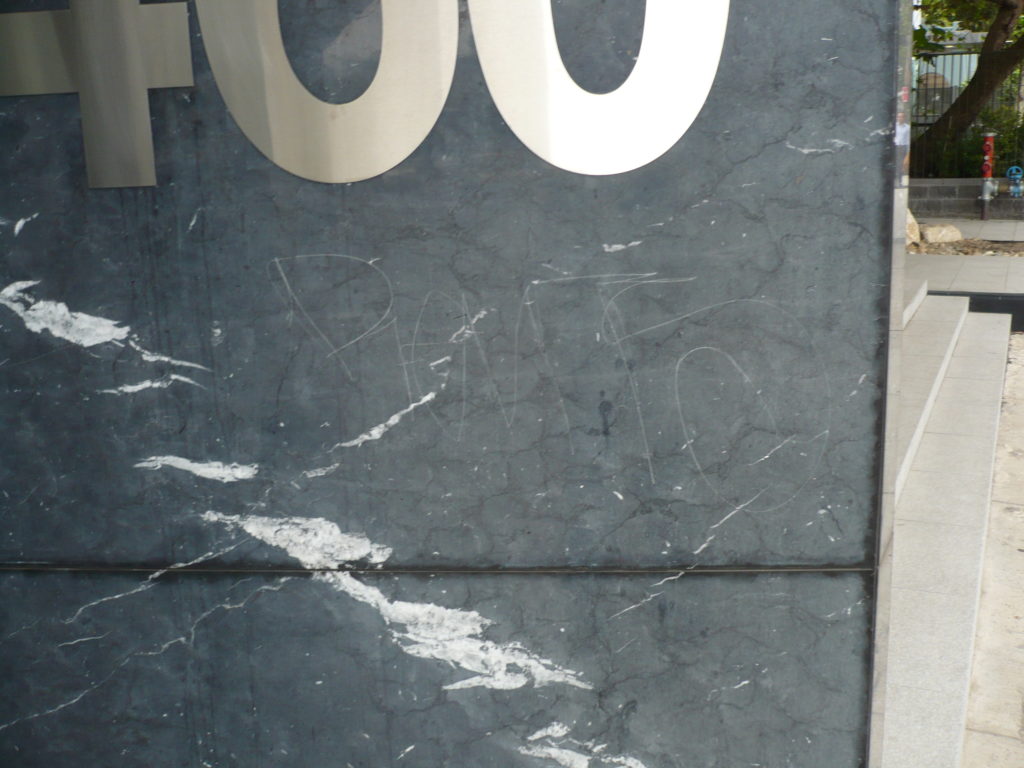Stone and tile are generally very dense, hard, long lasting surfaces, but no matter how hard the surface, given enough pressure it can be scratched. Even porcelain tile which is normally harder then granite can be scratched. It can be difficult to restore, but in most cases scratched tile can be restored.
We have seen everything from very light scuffing, to extremely deep gouging, and once damaged no amount of traditional cleaning can remove a scratch. To further complicate matters, dirt and grime tends to gets caught in the texture of the scratched tile, which further highlights the appearance of the scratch, and the surface becomes unhygienic – especially of concern on a kitchen bench or food preparation area.
All scratching, no matter how deep can be removed. The scratched tile recovery process involves grinding underneath the lowest point of the scratch to achieve a flat surface. Deeper scratches are feathered out over a larger area to avoid creating a visible dip in the stone. Once we are under the scratch we can return the surface to match in with the surface’s original shine and colour.
To avoid scratching we suggest that good matting is used at doorways to remove grit as people enter your home. This is especially important if you are close the beach as sand can be problematic. Felt or cork pads can be fixed to the bottom of chairs often moved, and computer chairs on wheels should have a plastic mat under them.
By being sensible around prevention most people can avoid common methods of damage. The harder surfaces when scratched are harder and more expensive to fix then softer stones, so no matter what your surface we suggest thinking about scratch prevention.
Intentional defacement of public buildings is a major issue, but even these deep gouges can be removed

